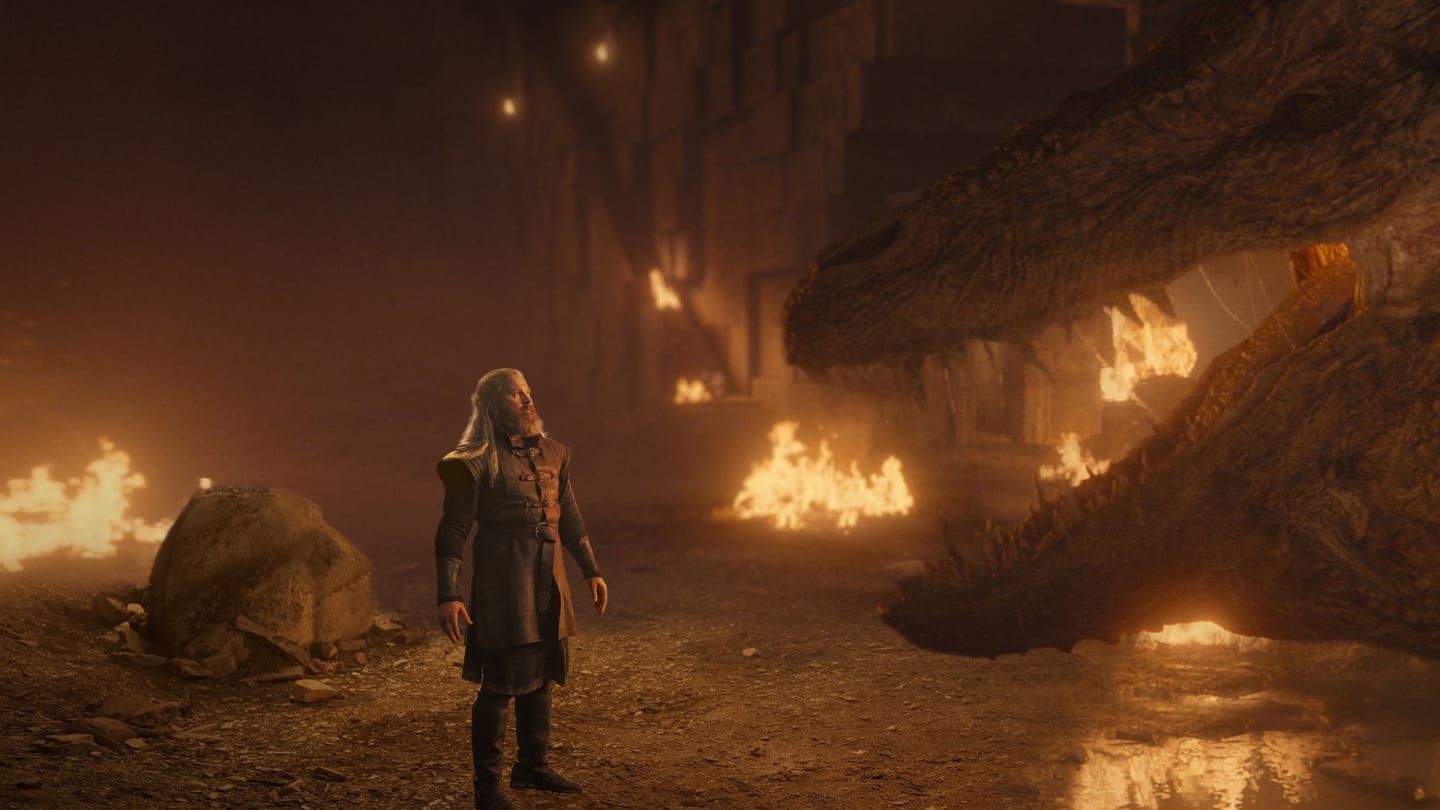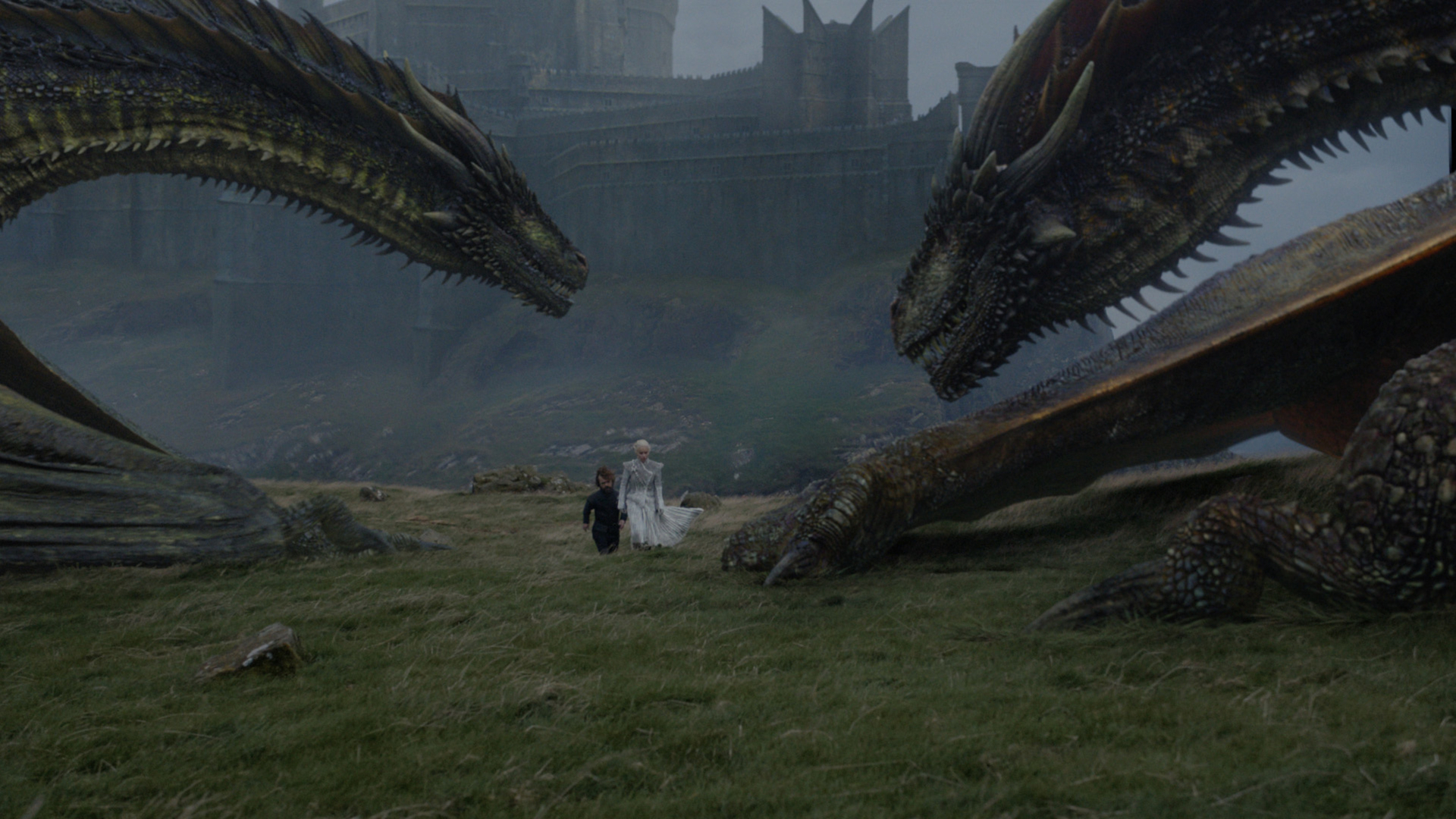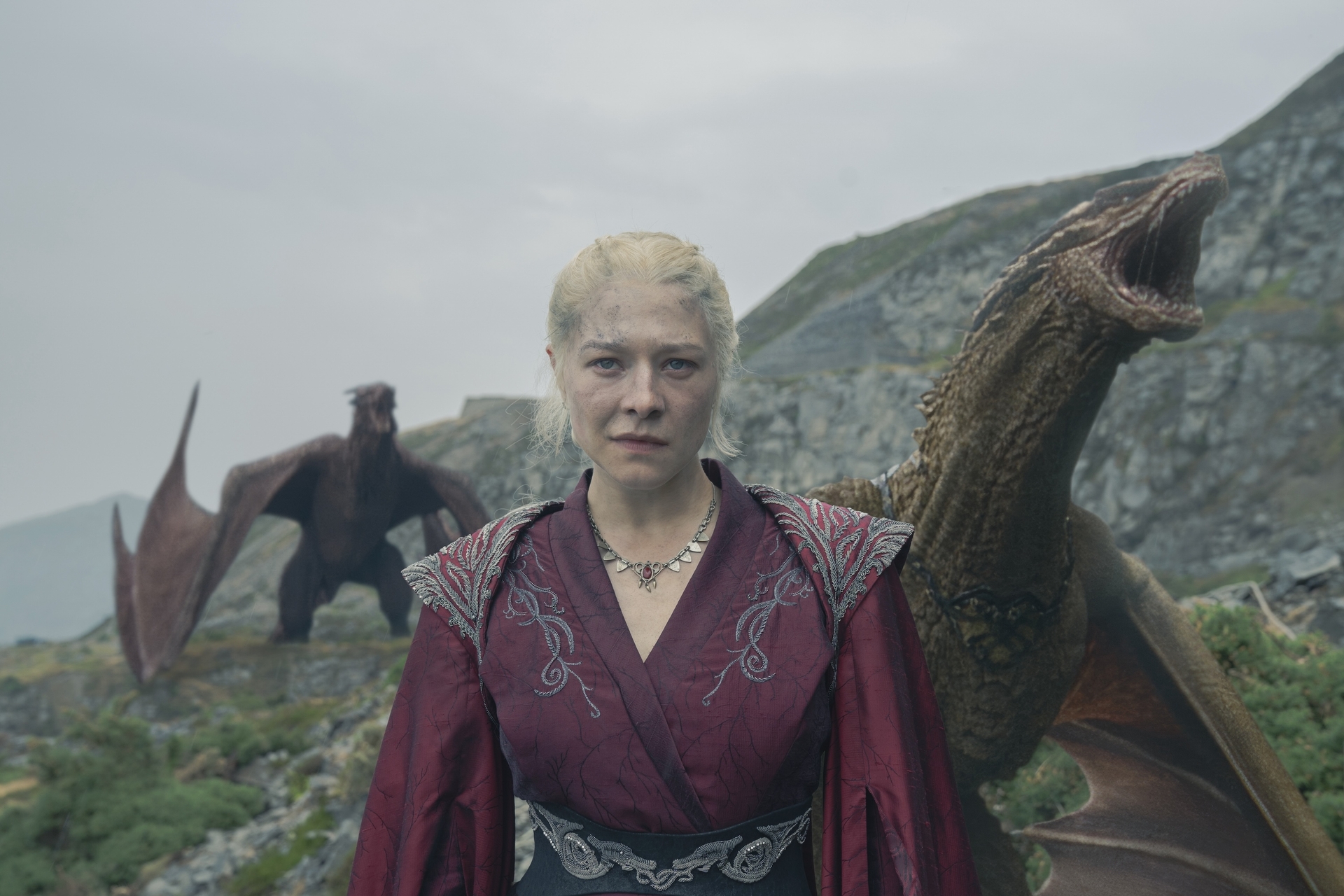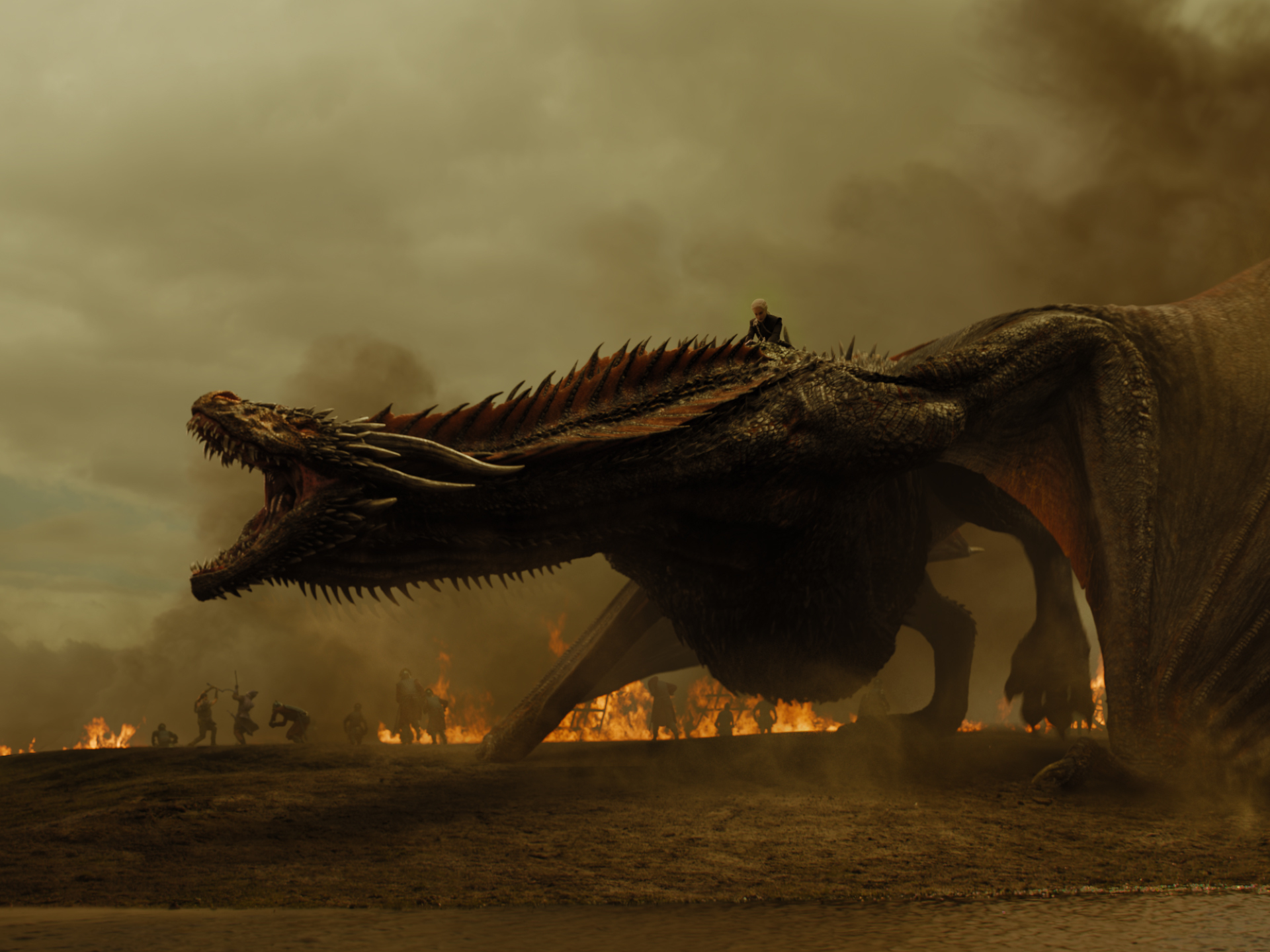
As a long-time fan of George R.R. Martin’s intricate world and its complex web of characters, I must confess that the recent developments in House of the Dragon have left me somewhat bewildered. Having witnessed the careful construction of rules governing dragon riding in Game of Thrones, it seems to me that the new precedent established by the show is akin to opening a gate that was once thought impregnable and letting chaos spill forth.
The realm depicted in “A Song of Ice and Fire” is intricately woven, boasting elaborate feudal structures, vast landscapes, and a multitude of mythical beings; it stands as one of the most expansive fantasy series in recent times. Remarkably, while much about this world is intricate, certain aspects of its history have been relatively clear, such as the notion of dragon-taming.
Prior to the Destruction of Valyria, numerous families of dragonlords coexisted, each employing distinct approaches to claim and domesticate their dragons. Nevertheless, throughout most of Westerosi chronicles, dragons are depicted as inseparable allies that forge ties exclusively with the Targaryen dynasty. By the era of ‘Game of Thrones’, much about this link has become obscure due to the extinction of dragons by then.
As a dedicated gamer, I find myself immersed in the captivating prequel series, “House of the Dragon.” Unlike the political power plays that unfolded in Westeros during Game of Thrones, this storyline transports us back to the peak of Targaryen dominance. It’s a time when family lore and dragon-taming traditions are still being passed down from one generation to another. The young members of the House Targaryen, much like Daenerys, get the rare chance to forge bonds with dragons, right from their hatching moments. However, as the second season of “House of the Dragon” started to question who truly has claim over these mystical creatures and how they can be controlled, it began to shake the foundations of the magical system fans have come to know and appreciate for years.
In this piece, we delve into the well-known tales of dragon-riding as presented in “Game of Thrones” and the “Song of Ice and Fire” books. We’ll explore how the latest season of “House of the Dragon” deviates from these established rules, and speculate on the potential implications for the franchise going forward.

The rules of dragon-riding
In the fan community of “Game of Thrones,” numerous theories have been proposed regarding the Targaryens’ ability to control dragons. Interestingly, most of the Targaryen characters in the original series seemed disconnected from their ancestry and therefore lacked knowledge about their unique abilities. As a result, it remains unclear what exactly draws a dragon to bond with a rider.
I used to think I knew what it was to claim a dragon, but I understand now that what I thought I knew is ash in the wind. Perhaps it is blood. Or worth. Or perhaps it’s something else.
As a devoted fan, I’ve come to understand that dragons usually choose riders who share a strong connection with House Targaryen. Newborn royals were frequently gifted with a dragon egg at birth, fostering an emotional bond between the child and the hatching dragon. Remarkably, some dragons would accept new riders when their previous companions had perished, but this acceptance was not always guaranteed, requiring a profound connection or understanding to be formed anew.
In both the initial series and George R.R. Martin’s book Fire & Blood, it’s clear that the bond between a dragon and its rider is primarily exclusive or monogamous in nature. A dragon will typically refuse another rider until the current one has perished, and conversely, the rider cannot mount another dragon as long as their original remains alive. This strong connection may involve some magical elements, since Targaryen rulers have experienced their dragons’ pain, and dragons have sensed the passing of their first riders.
With these fundamental guidelines established, readers and viewers understand the general behavior of dragons they come across in various books and series. If a dragon has a rider, it will remain faithful to them. However, unclaimed dragons can follow commands, but they may still be up for grabs in the future. But what transpires when these rules don’t hold as steadfast as fans anticipated, an occurrence that takes place in season 2 of House of the Dragon?

Can non-Targaryens claim dragons?
In Old Valyria, numerous families possessed the ability to ride dragons. It’s plausible that some of these genetic traits might have been passed down to other families. Considering that not just the Targaryens, but also families like the Velaryons, traveled from Valyria to Westeros, it’s possible for dragonlord genetics to be present in various families. However, it is primarily the Targaryen lineage where these dragon-riding genes are most evidently found in Westeros. Hence, dragons are typically associated with members of this family.
That holds true even if the dragon-riders only had one Targaryen parent. For example, Rhaenys Targaryen’s children Laenor and Laena are both dragon riders, despite being Velaryons. Likewise, Rhaenyra’s children are dragon-riders, despite being Velaryon in name and despite their actual father being Robert Strong.
In simpler terms, while the original characters on the show are still descendants of the Targaryen family, who were known for their dragon-riding abilities, the new dragon riders introduced in season 2 appear to be only distantly related, or not related at all, to the Targaryens, with Hugh Hammer being the exception.
In the book “Fire & Blood”, it is said that Addam of Hull is Laenor’s alleged illegitimate son, making him a grandson of a Targaryen and the son of a dragon rider. However, whispers suggest that he might actually be the son of Laenor’s father Corlys, which the series has verified. This creates a more complex scenario because, as we know, the Velaryons were not known for their dragon-riding abilities, and Corlys appears to lack Targaryen lineage.
In the series, Corlys speculates that Addam’s mother might have had Targaryen ancestry, but this seems questionable, especially given that his brother Alyn conceals his silver-white hair. If his mother possessed Valyrian traits, she wouldn’t need to hide her own. This implies that if she has any Targaryen lineage, it’s probably from her ancestors, possibly going back multiple generations.
In the book, neither Hugh Hammer nor Ulf White could trace their family history, but they possessed typical Valyrian traits. This might suggest they were offspring of Targaryen parents, as both claim to belong to House of the Dragon. Yet, it’s equally plausible that their Targaryen lineage extends much further back in time.
In the novel “Fire & Blood,” there’s a character named Nettles, who despite not having known Targaryen heritage or Valyrian features, manages to tame the wild dragon Sheepstealer by feeding it. However, Nettles was eliminated from the series, and her role was combined with Daemon Targaryen’s daughter Rhaena, who is of Targaryen lineage. By removing the only character without Targaryen roots, the show appears to emphasize or at least imply that one must have Targaryen genes to bond with a dragon, or else it offers no contradictory example.
In the series, Ser Steffon Darklyn, who descends from a Targaryen princess several generations back, wasn’t able to ride a dragon. It’s possible this was due to his lack of bond with the specific dragon, but it seems more likely that Seasmoke, the dragon in question, refused him because his Targaryen bloodline is too diluted. This implies that having a Targaryen ancestor within the span of a great-grandparent might be necessary for dragon riding.

How exclusive is the bond between dragon and rider?
The typical belief about dragon-rider relationships is that each dragon has just one rider. In George R.R. Martin’s “A Song of Ice and Fire” series, Daenerys Targaryen gives birth to three dragons. Nevertheless, she only frequently mounts Drogon. In the television show “Game of Thrones,” Jon Snow rides Rhaegal, while the Night King controls Viserion (essentially a ‘zombie’ Viserion).
As a devoted fan, I find myself questioning some intriguing aspects in the second season of “House of the Dragon.” Given that Laenor’s demise was staged, it seems unfathomable that his dragon, Seasmoke, would accept another rider. Yet, to my surprise, Seasmoke has accepted Addam of Hull as his new master. This conundrum leads me to ponder: did Laenor truly perish offscreen (as we suspect), or are the established rules about dragons and their bonding somehow amiss?
In light of this, can a non-exclusive bond also work in reverse? When Rhaenyra was trying to discover new dragon riders, Vermithor seemed open to her commands. Was it possible for her to claim another dragon? Or, if riding Vermithor is not an option, could she not command him, similar to how Daenerys commands Viserion and Rhaegal in battle?
Ignoring this rule significantly complicates the task for viewers to immerse themselves and suspend disbelief. In the series House of the Dragon, the primary magical aspect is dragon control. If there’s no uniformity in how the rules are applied, it weakens the show’s tension, making it difficult to trust future regulations about dragons since they might be as easily disregarded.

What does the new precedent do to the canon of Game of Thrones?
In essence, continually disregarding rules and implying that the Targaryens have a lot left to learn about dragon-riding, despite their upbringing among fellow riders, tends to complicate and lessen our enjoyment of any plot points involving these dragons.
How is it clear to the readers what the true regulations are in this fictional universe? Are the characters disregarding them due to a reasonable lack of knowledge, or simply for plot convenience? This method could potentially weaken the overall integrity of all tales set within George R.R. Martin’s world, as it could establish a hazardous precedent.
It makes complete sense that more than just Daenerys and potential hidden Targaryens could have ridden dragons in Game of Thrones, given the complex family ties within the series. There are numerous characters who can undeniably trace their lineage to Targaryen forebears.
The House Baratheon stands out due to its unique origins and connections with the Targaryens. Initially founded by Orys Baratheon, who was rumored to be Aerion Targaryen’s offspring, later members of the house, like Lord Ormund Baratheon, wedded into the Targaryen family, tying the houses together. Their descendants, such as Robert, Stannis, and Renly Baratheon, may genetically possess the same affinity for dragons as the dragonseeds. Shireen Baratheon, a member of this lineage, often experiences nightmares involving dragons, suggesting she might be a dreamer of these mythical creatures.
In a fascinating twist, I can’t help but wonder about the alternate tale that could have unfolded if Oberyn Martell, my beloved character from Game of Thrones, had seized one of Daenerys’s dragons in a bid for vengeance against the Lannisters instead of choosing his own martyrdom. The descendants of the Martells might have followed a dramatically different path, and the course of Westeros’ history could have been fundamentally altered.
In simpler terms, these hypothetical scenarios hold significant weight when we remember that Jon Snow riding Rhaegal was taken as evidence that he is indeed a son born from the union between Rhaegar and Lyanna. As Jace points out, being able to ride dragons serves as a symbol of Targaryen lineage. However, it’s worth noting that some other major houses in Westeros may also have valid claims to dragons due to their distant Targaryen ancestry.
In the original stories, a method was devised to justify Jon’s dragon riding, but it wasn’t employed because, at the time the books and series were penned, it was thought impossible. However, in upcoming seasons of House of the Dragon, viewers might question whether dragons will remain faithful to their riders, as evident by Seasmoke’s disloyalty.
Essentially, it seems these adjustments were primarily aimed at streamlining the narrative. It’s beneficial that one of the first season’s LGBT+ characters wasn’t eliminated, but Addam still required a dragon. The idea of Laenor fathering illegitimate children is less plausible compared to Corlys, given his exclusive homosexuality portrayal. Yet, even minor alterations can trigger significant consequences.
Over the next two seasons, the relationships between riders and their dragons could be crucial. Will most of them adhere to the rules, with Addam being an unusual case, or will we discover that what was thought to be true may now need questioning? Let’s just pray that whatever the scriptwriters decide, it doesn’t add even more complexity to the story.
Read More
- Clash Royale Best Boss Bandit Champion decks
- Best Hero Card Decks in Clash Royale
- Brawl Stars December 2025 Brawl Talk: Two New Brawlers, Buffie, Vault, New Skins, Game Modes, and more
- Clash Royale December 2025: Events, Challenges, Tournaments, and Rewards
- Best Arena 9 Decks in Clast Royale
- Call of Duty Mobile: DMZ Recon Guide: Overview, How to Play, Progression, and more
- Clash Royale Witch Evolution best decks guide
- Cookie Run: Kingdom Beast Raid ‘Key to the Heart’ Guide and Tips
- Clash of Clans Meltdown Mayhem December 2025 Event: Overview, Rewards, and more
- All Boss Weaknesses in Elden Ring Nightreign
2024-08-25 16:42